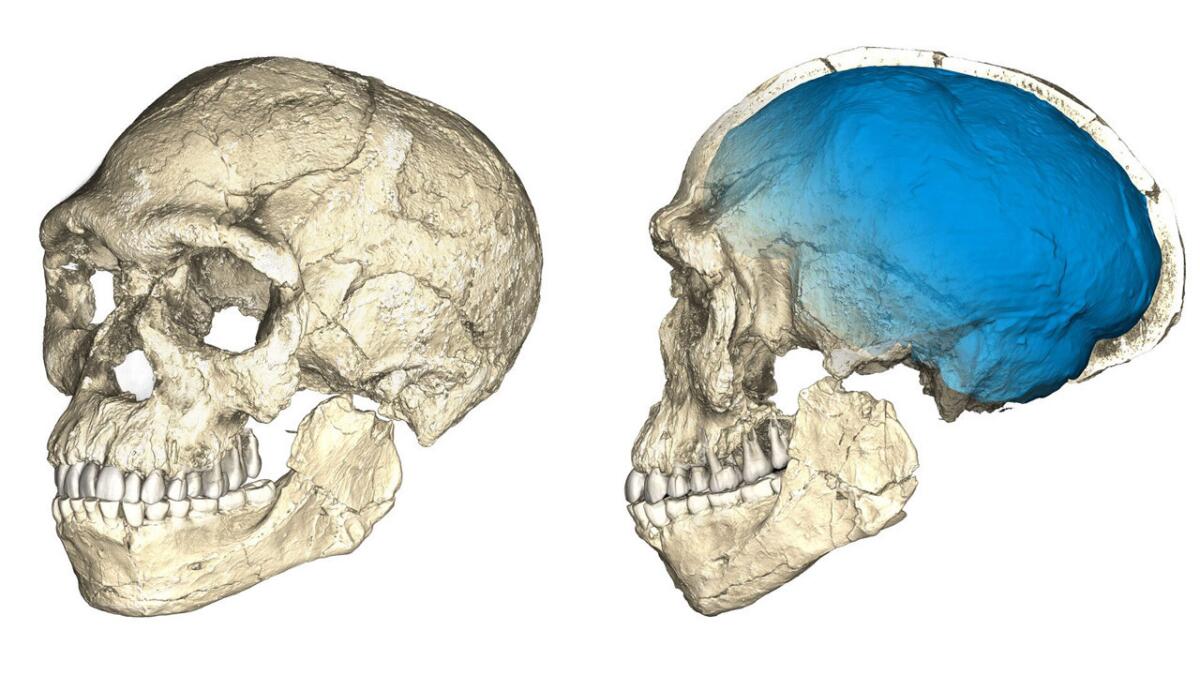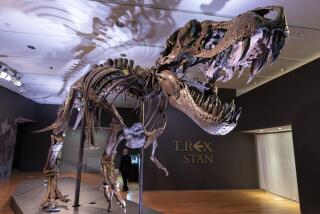Can simulating evolution on a computer explain our enormous brains?

Compared to brains in the rest of the animal kingdom, the size of the human brain is way out of whack.
Our brains are roughly six times larger than what you would expect for a placental mammal of our stature, scientists say.
And no other animal has a brain as large as ours relative to body size.
So why did humans evolve this way when other animals did not?
It’s a question that evolutionary biologists and anthropologists have been trying to answer for decades.
Our giant brains must have helped our ancestors survive in the African savannah where the first modern humans evolved, but they also came at a metabolic cost.
The human brain represents just 4% of our body weight, but it consumes 20% of our energy, said Mauricio González-Forero, a mathematical evolutionary biologist at the University of St. Andrews in Scotland.
“It’s a very expensive organ,” he said.
Even with our disporportionately large brains, determining what social and environmental conditions brought them about is a hard problem to solve.
Human brain evolution is not something you can test in the lab. It would take hundreds of years, if not thousands, to reveal how evolutionary pressures shaped the modern human brain.
Instead, researchers have generally focused on the relationship between the size of different animals’ brains and their ability to find food, learn new skills, and live in groups. Those correlations allow scientists to make inferences about why the human brain might have evolved as it did.
But this strategy has limitations, González-Forero said. For example, researchers have found a link between large group size and large brain size, he said. But it is not clear what came first — living in large groups, or developing a large brain.
In a paper published Wednesday in Nature, González-Forero set out to approach the question in a different way — by attempting to simulate evolution in a computer.
He started by considering how much energy an adult woman needs to sustain her brain, body tissues and the energetic cost of reproduction.
He also included data on how the energy requirements of an organism shift depending on its body size and the size of its brain.
For example, a bigger brain might have helped our ancestors find and consume food more efficiently by allowing them to be more adept at tracking and by learning to cook over fire. But the brainpower needed to carry out those activities requires more energy.
Next, González-Forero identified four challenges that early humans might have faced that could have influenced the size of their brains. These were classified as ecological (me vs. nature), cooperative ecological (us vs. nature), competition between individuals (you vs. me) and competition between groups (us vs. them).
By fiddling with the levels of each of these factors in the computer model and then running it through many generations, he was able to see which combination of evolutionary pressures was most likely to give rise to the modern human brain size.
The results showed that the size of our brains can best be explained primarily as a response to ecological pressures, but not exclusively.
The best match for modern human brain size came when the challenges facing our virtual ancestors were 60% ecological, 30% cooperative ecological, and 10% competition between groups.
The model also suggests that our brains would have been even larger if they were molded entirely by the challenge of efficiently extracting energy from the environment, González-Forero said. The cooperation among individuals limits how large our brains need to be to survive.
“Cooperation decreases brain size because you can rely on the brain of other individuals,” he said.
But why didn’t other animals that lived in the same environment develop large brains as well?
Although González-Forero’s model doesn’t address this question directly, he said it does offer some potential clues. Specifically, the model suggests that human brain size would only develop the way it did if our ancestors were inclined to acquire new skills throughout their lives.
“Ecological challenges can only lead to brain size of this scale if they are coupled with the ability to continue learning from others,” he said. “The paper is suggesting that human brain development is an interaction between these two things — ecological pressures and culture.”
Robert Barton, an evolutionary anthropologist at Durham University in England who was not involved in the new work, described the study as extremely ambitious. He said he appreciates that the model examines interactions and trade-offs among social and ecological factors.
“This is surely something that has not been considered sufficiently in the past,” he said.
However, he added that any general model of brain evolution will have extremely limited explanatory powers since it is likely that different forces acted to shape brain size at different times.
Robin Dunbar, an evolutionary psychologist at the University of Oxford, offered a more damning critique.
Although the work looks impressive, he said in an email, it is misleading because the authors misconstrued the ecological problem that animals, including hominins, had to cope with. Then they confused the social mechanisms our ancestors used to solve these problems. As a result, the researchers mistakenly saw cooperation as a cause — rather than a consequence — of living in groups, he said.
“Computer models are fine, but you get out what you put in — what is known as the GIGO (or garbage in, garbage out) mode of science,” he said.
González-Forero said he expected some pushback to the work, and he admitted that although his model is fairly complex and robust, it could always be improved.
“That’s the story of science,” he said. “You are never at the end. This is opening up a new way of addressing this question and there is room for a lot of exciting new work to be done.”
Do you love science? I do! Follow me @DeborahNetburn and “like” Los Angeles Times Science & Health on Facebook.
MORE IN SCIENCE
Stolen from another sun: This backward-traveling asteroid could be an interstellar space fossil
The death rate from cancer is falling for American men, women and children of all backgrounds
A little extra global warming will mean a lot more habitat loss for plants and animals, study says






